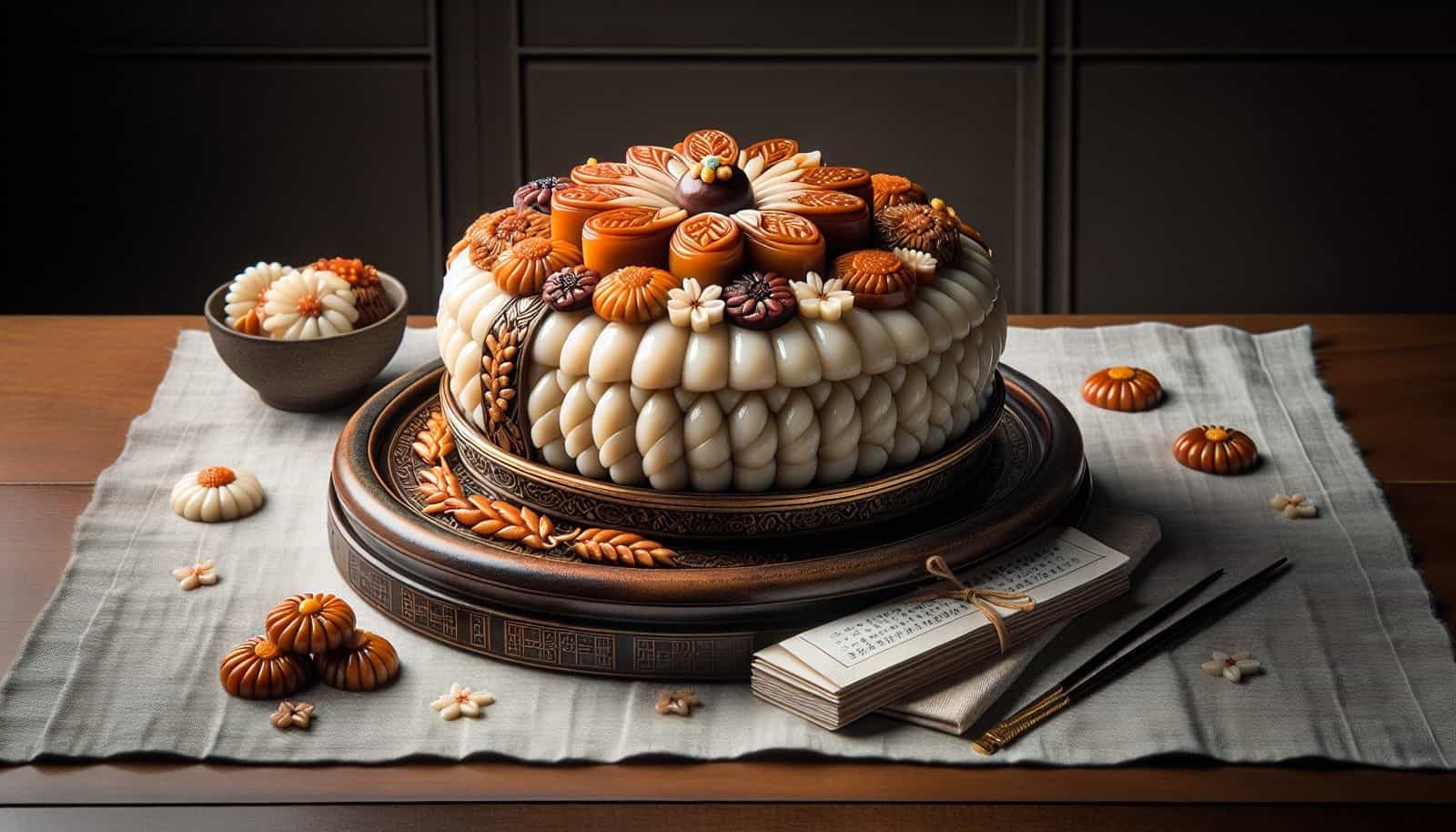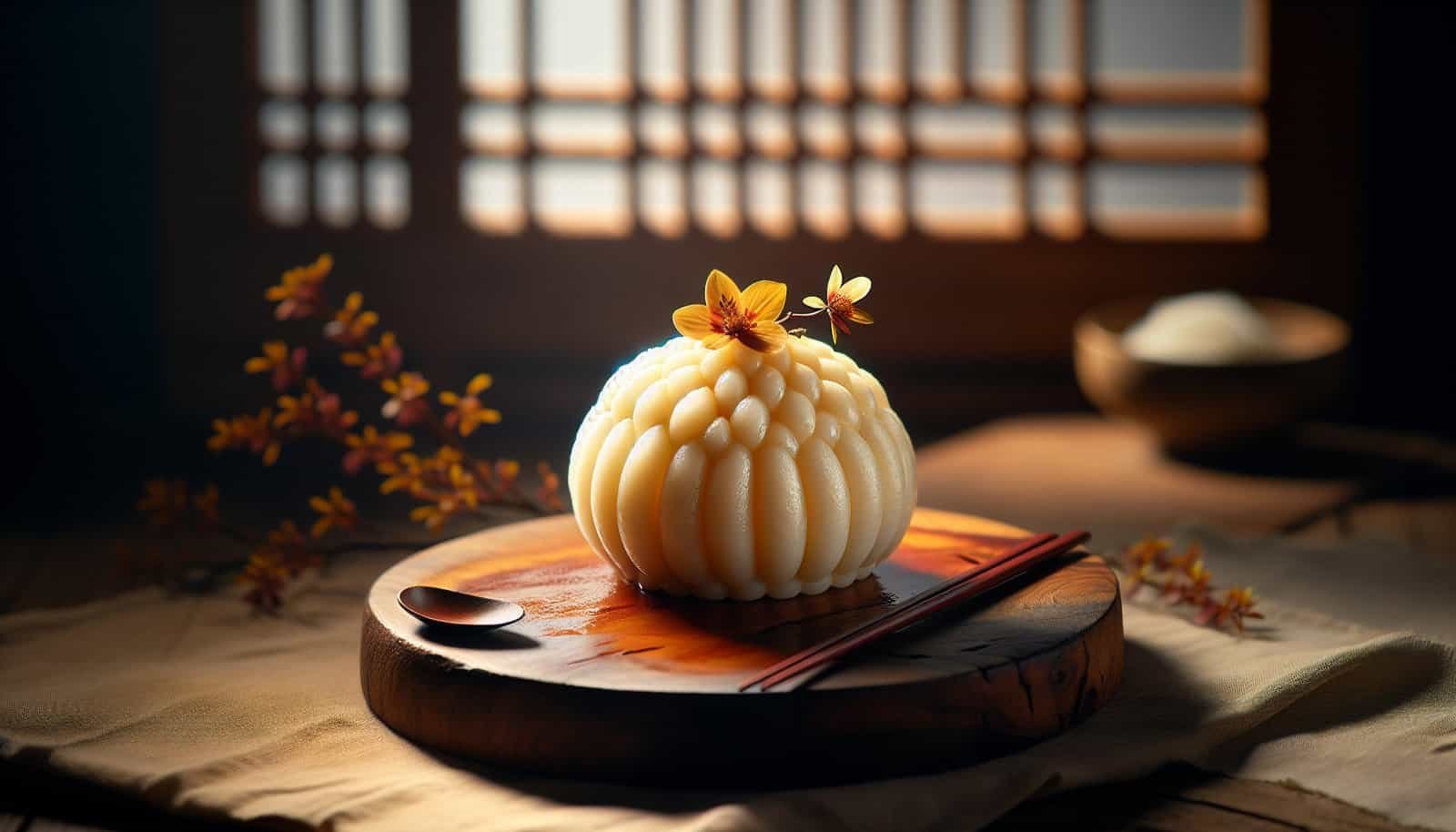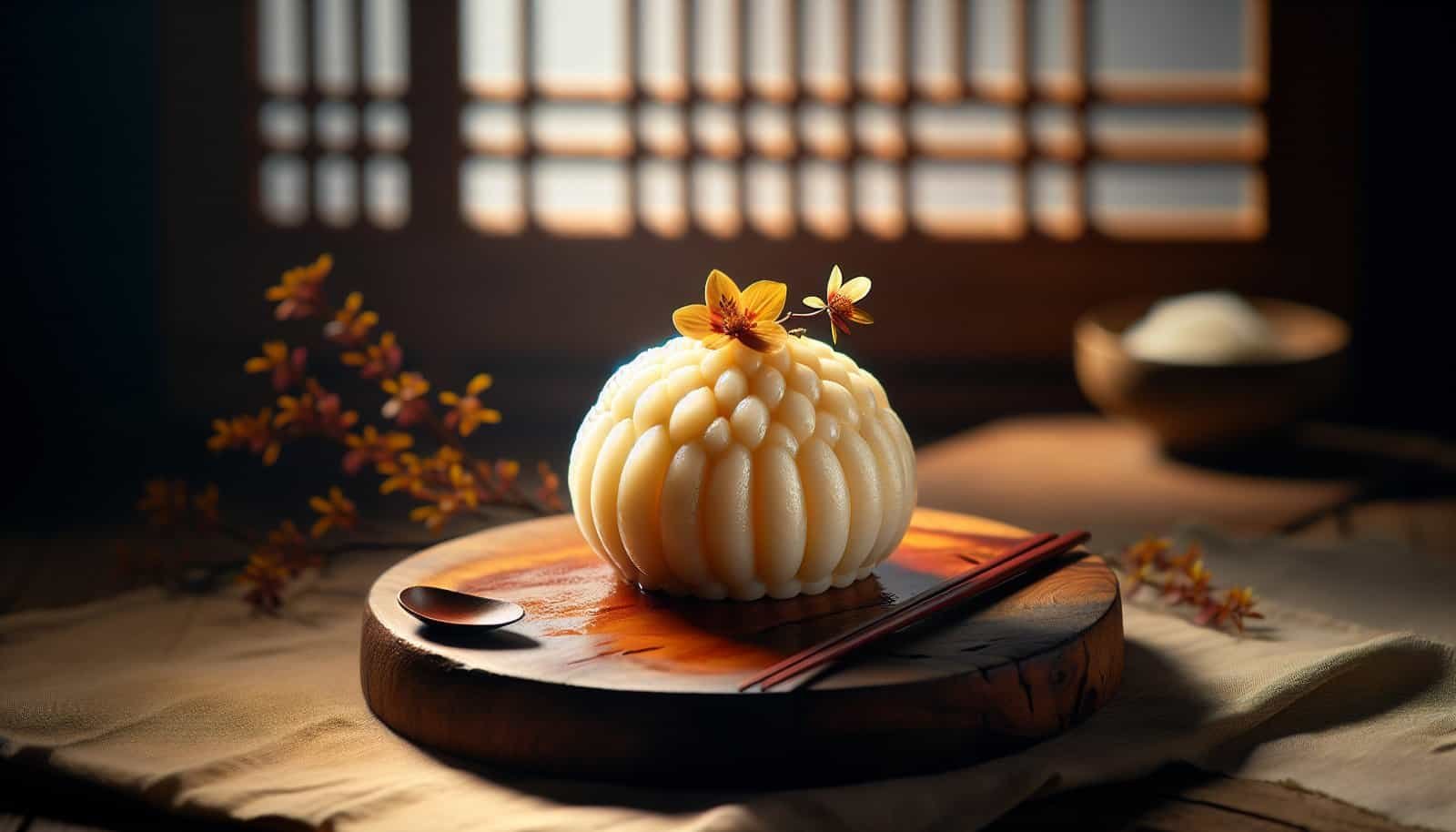Have you ever wondered how to make traditional rice cakes, or tteok, in the comfort of your own home? Look no further, because we’ve got you covered! In this article, we will guide you through the step-by-step process of creating these delicious and chewy treats that have been enjoyed for centuries in Korean cuisine. Whether you’re a beginner or an experienced cook, our easy-to-follow instructions and tips will ensure that you can make authentic tteok that will impress your family and friends. So grab your apron and let’s get started on this culinary adventure!
Choosing the Right Rice
Choosing the Right Type of Rice
When it comes to making traditional rice cakes at home, choosing the right type of rice is crucial. While any variety of rice can be used, it is recommended to use short-grain rice for the best results. Short-grain rice has a higher starch content, which helps the rice cakes hold their shape and gives them a soft and chewy texture. Some popular options for rice include glutinous rice, sweet rice, or sushi rice.
Preparing the Rice
Before proceeding with making rice cakes, it’s important to prepare the rice properly. Rinse the rice under cold water until the water runs clear to remove any impurities. Then, drain the rice and allow it to sit in a colander for about 30 minutes to remove excess water. This step ensures that the grains of rice are hydrated evenly and will result in a better texture for the rice cakes.
Soaking and Grinding the Rice
Soaking the Rice
After the rice has been prepared, the next step is to soak it. Soaking the rice helps to soften the grains and make them easier to grind. Place the rice in a large bowl, and add enough water to completely cover the rice. Let it soak for at least 6 hours or overnight for best results. Soaking the rice for an extended period of time allows it to absorb enough water and ensures that the rice cakes come out soft and tender.
Grinding the Rice
Once the rice has finished soaking, it’s time to grind it into a smooth batter. There are different methods available for grinding the rice, depending on the equipment you have. You can use a traditional stone grinder, a mortar and pestle, or a blender. Grind the soaked rice in small batches until it reaches a smooth consistency and there are no visible grains of rice remaining. The smooth batter will provide the perfect base for making rice cakes.

Making Rice Cake Batter
Mixing the Rice Flour and Water
To make the rice cake batter, start by transferring the ground rice into a large mixing bowl. Gradually add water and stir continuously until a thick and smooth batter is formed. The consistency of the batter is crucial, as it should be thick enough to spread evenly but pourable. If the batter is too thick, gradually add more water; if it’s too thin, add more rice flour until the desired consistency is achieved. The perfect batter creates rice cakes with a delightful texture and taste.
Adding Sweeteners and Flavorings
While traditional rice cakes are often made with plain rice flour and water, you have the option to add sweeteners and flavorings to enhance the taste. Common sweeteners include sugar, honey, or even syrup made from fruits like pears or persimmons. For an extra burst of flavor, consider adding a pinch of salt, vanilla extract, or even spices like cinnamon. These additions can take your homemade rice cakes to the next level and create a unique and enjoyable dessert.
Steaming the Rice Cakes
Preparing the Steamer
Steaming is the most common cooking method for rice cakes and is essential for achieving their signature chewy texture. Start by preparing a steamer with a lid. If you don’t have a traditional steamer, you can use a pot with a steaming rack or even a heat-safe plate elevated with a heatproof stand. Fill the steamer with water, making sure it doesn’t touch the bottom of the rice cakes once they are placed inside. Bring the water to a boil and ensure that the lid is tightly sealed to trap the steam.
Pouring the Batter and Steaming
Once the steamer is ready, it’s time to pour the rice cake batter. Grease a shallow dish or pan that fits inside the steamer and pour the batter into it. Smooth out the surface of the batter with a spatula or the back of a spoon to ensure even cooking. Carefully place the dish or pan onto the steaming rack or plate inside the steamer and cover it with the lid. Allow the rice cakes to steam for about 30-40 minutes or until they become firm and slightly translucent.

Shaping the Rice Cakes
Preparing Molds or Pans
After the rice cakes have been steamed, it’s time to shape them into their final form. Prepare the molds or pans by lightly greasing them to prevent sticking. Traditional rice cake molds can be made of wood, silicone, or even plastic. If you don’t have molds, a square or rectangular baking pan will work just fine. The choice of shape depends on personal preference and the specific rice cake variety you intend to make.
Pouring and Leveling the Batter
Once the molds or pans are ready, pour the steamed rice cake batter into them. Use a spatula or the back of a spoon to level the surface of the batter, ensuring that it is evenly distributed. Take care not to press down too hard, as this may affect the final texture of the rice cakes. Smooth out any surface imperfections to create a uniform appearance. Allow the rice cakes to cool and set completely before proceeding to the next step.
Cooking the Rice Cakes
Boiling Method
Apart from steaming, another popular cooking method for rice cakes is boiling. This method is often used for certain varieties of rice cakes, such as the Korean tteokbokki. To use the boiling method, bring a pot of water to a rolling boil and carefully add the rice cakes. Stir gently to prevent them from sticking to the bottom of the pot. Boil the rice cakes for a few minutes until they float to the top and become soft and chewy. Drain the rice cakes and rinse them with cold water to prevent them from sticking together.
Microwave Method
For a quick and convenient cooking method, the microwave can be used to cook rice cakes. Place the shaped rice cakes in a microwave-safe dish and add a small amount of water to the dish, enough to cover the bottom. Cover the dish with a microwave-safe lid or a microwave-safe plastic wrap, leaving a small vent for steam to escape. Microwave the rice cakes on high power for 1-2 minutes or until they become soft and pliable. Carefully remove the dish from the microwave and let the rice cakes cool slightly before serving.

Serving and Storing
Garnishing and Serving Suggestions
Now that your homemade rice cakes are ready, it’s time to serve and enjoy them. There are endless possibilities for garnishing and serving these delightful treats. Traditional options include sprinkling them with toasted sesame seeds, drizzling them with sweet sauces like caramel or chocolate, or dusting them with powdered sugar. You can also serve them alongside fresh fruits, ice cream, or a warm cup of tea. Get creative with your toppings and presentation to make your rice cakes even more visually appealing.
Storing Leftover Rice Cakes
If you have any leftover rice cakes, they can be stored in the refrigerator to enjoy later. Place the rice cakes in an airtight container or wrap them tightly in plastic wrap to prevent them from drying out or absorbing unwanted odors. When you’re ready to enjoy them again, simply steam or microwave them for a few minutes to warm them up. It’s important to consume the leftover rice cakes within a couple of days to ensure their freshness and quality.
Variations and Additional Tips
Savory Rice Cakes
While sweet rice cakes are more commonly known, there is a whole world of savory rice cakes waiting to be explored. To make savory rice cakes, simply omit the sweeteners and flavorings from the batter and experiment with adding savory ingredients instead. Chopped vegetables, cooked meats, or even cheese can be incorporated into the batter to create a flavorful and satisfying snack or meal. The cooking methods, such as steaming or boiling, remain the same, allowing you to explore endless flavor combinations and enjoy savory rice cakes in unique ways.
Colored Rice Cakes
For a visually striking twist to your rice cakes, consider adding natural food coloring to the batter. By adding ingredients like matcha powder for green, beetroot powder for pink, or turmeric for yellow, you can create vibrant and colorful rice cakes that are as beautiful as they are delicious. Add the desired amount of food coloring to the batter and mix well until the color is evenly distributed. Follow the same steps for soaking, grinding, and cooking the rice cakes, and marvel at the stunning results.
Troubleshooting Tips
If you encounter any issues while making rice cakes, here are a few troubleshooting tips to help you out:
- If the batter is too sticky, add a small amount of rice flour until it reaches the right consistency.
- If the rice cakes turn out too dry or hard, try reducing the cooking time or increasing the amount of water in the batter.
- If the rice cakes fall apart easily, make sure to steam them for an adequate amount of time to allow them to set properly.
Remember, practice makes perfect, and don’t be discouraged if your first attempt doesn’t turn out exactly as expected. Rice cakes can be a bit tricky to master, but with time and experience, you’ll soon become an expert rice cake maker.

Enjoying Rice Cakes in Traditional Dishes
Tteokbokki (Spicy Rice Cake Stir-Fry)
One of the most famous Korean dishes featuring rice cakes is tteokbokki. This spicy rice cake stir-fry is beloved for its addictive and fiery flavors. To make tteokbokki, simply stir-fry the rice cakes with gochujang (Korean red pepper paste), soy sauce, sugar, and various vegetables like cabbage, carrots, and green onions. Add some fish cakes or boiled eggs for extra protein, and you’ll have a mouthwatering dish that showcases the chewy and comforting texture of rice cakes.
Songpyeon (Half-Moon Shaped Rice Cakes)
Songpyeon is a traditional Korean rice cake typically made during the harvest festival known as Chuseok. These half-moon shaped rice cakes are filled with sweet and nutty fillings like sesame seeds, red bean paste, or honey. The rice cakes are steamed and then drizzled with a bit of sesame oil to enhance the flavors. Songpyeon symbolizes abundance and thankfulness and is a delightful treat to enjoy during special occasions or festivals.
Exploring Regional Tteok Varieties
Mochi (Japanese Rice Cake)
Mochi is a type of Japanese rice cake made from glutinous rice. It has a smooth and stretchy texture, making it a popular treat for many occasions. Mochi can be enjoyed plain or stuffed with various fillings like sweetened red bean paste, strawberries, or ice cream. The traditional method of making mochi involves pounding the rice with a wooden mallet, but modern methods using a food processor or stand mixer are now more common.
Chwee Kueh (Singaporean Rice Cake)
Chwee kueh is a beloved Singaporean dish made of steamed rice cakes topped with a flavorful mixture of preserved radish called “chai poh.” The rice cakes are soft and slightly chewy, while the preserved radish adds a savory and aromatic element to the dish. Chwee kueh is often enjoyed as a breakfast or snack and can be found in many hawker centers or food stalls throughout Singapore.
Khanom Tua Pui (Thai Rice Cake)
Khanom tua pui is a traditional Thai rice cake made from a combination of sticky rice and black beans. The rice cakes are wrapped in banana leaves and steamed until they become sticky and tender. Khanom tua pui is often enjoyed during festive occasions or as a sweet snack. The combination of the sticky rice and the creamy black beans creates a delightful texture and a subtly sweet taste.
By exploring different regional variations of rice cakes, you’ll get a taste of the diverse culinary traditions across different cultures. Each variety offers its own unique flavors and textures, allowing you to broaden your rice cake experience and find your personal favorites.
In conclusion, making traditional rice cakes at home can be a fun and rewarding culinary adventure. By following the steps outlined above and experimenting with different flavors and shapes, you can create delicious and unique rice cakes that will impress your family and friends. Whether you prefer sweet or savory options, there’s a rice cake variety out there to satisfy your taste buds. So, roll up your sleeves, gather your ingredients, and let the aroma of freshly steamed rice cakes fill your kitchen as you embark on this delightful journey. Enjoy!

